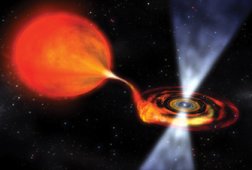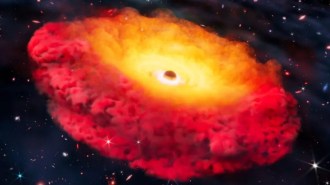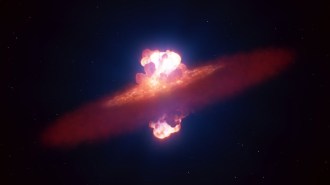Ripples in the fabric of space-time may put the brakes on the fastest-spinning stars in the universe and prevent them from flying apart. These stars, known as pulsars, pack as much mass as the sun into a sphere only about 16 kilometers across.

These dense, spinning remains of stellar explosions slow down over millions of years. However, they can rev back up by pulling mass off a neighboring star.
In theory, pulsars could remain intact at speeds as high as 1,000 to 3,000 revolutions per second. But in a recent survey of 11 pulsars, NASA’s Rossi X-ray Timing Explorer satellite found that none reached such speeds. In fact, the study indicates that no pulsar spins more than 760 times a second.
In the July 3 Nature, Deepto Chakrabarty of the Massachusetts Institute of Technology and his colleagues speculate that gravitational radiation may be the cosmic speed enforcer. This proposed radiation, a wavelike disturbance in space-time predicted by Albert Einstein, would be emitted by any massive object that is accelerating.
According to Lars Bildsten of the University of California, Santa Barbara, the faster a pulsar spins, the more radiation it releases. Ultimately, the energy lost in gravitational radiation balances the amount the pulsar gains by siphoning material from a companion star. When that happens, the pulsar displays its highest rate of rotation, Chakrabarty and his colleagues suggest.
Gravitational-wave detectors now in operation in Hanford, Wash., and Livingston, La., will eventually search for this radiation, says Bildsten.
****************
If you have a comment on this article that you would like considered for publication in Science News, send it to editors@sciencenews.org. Please include your name and location.







